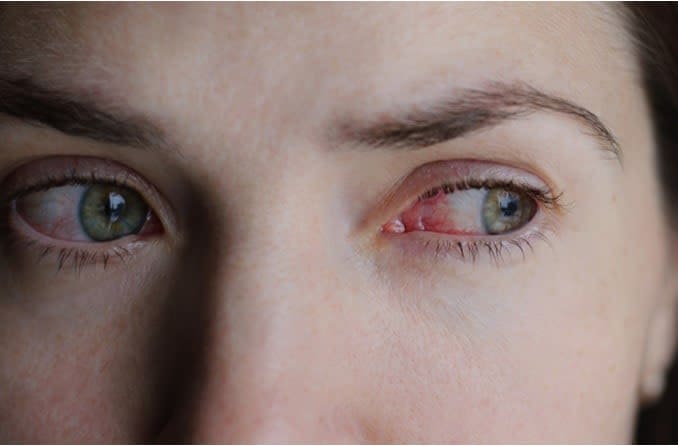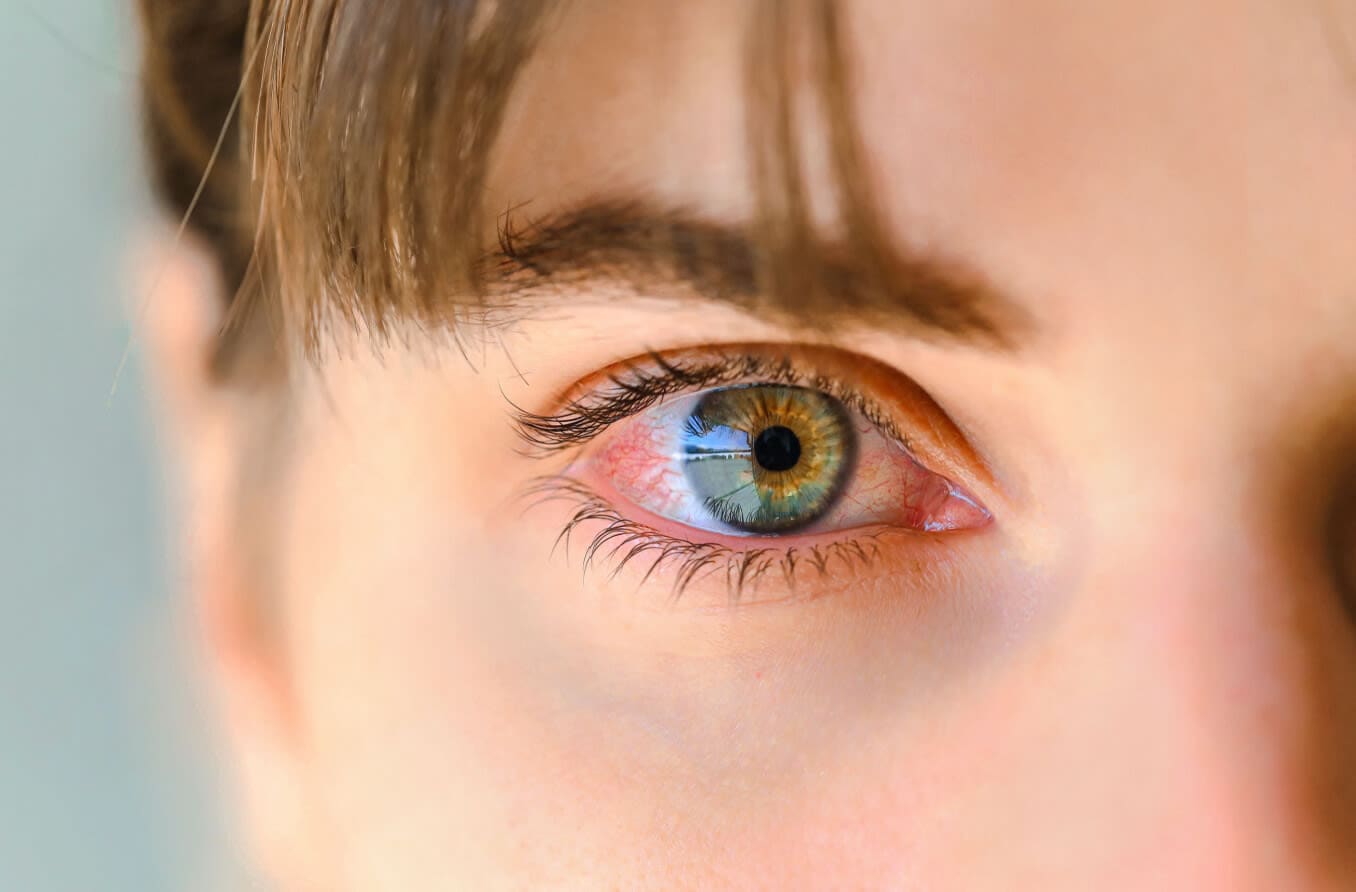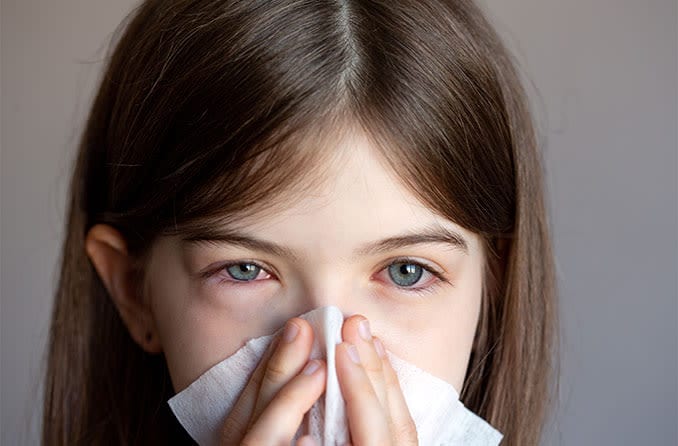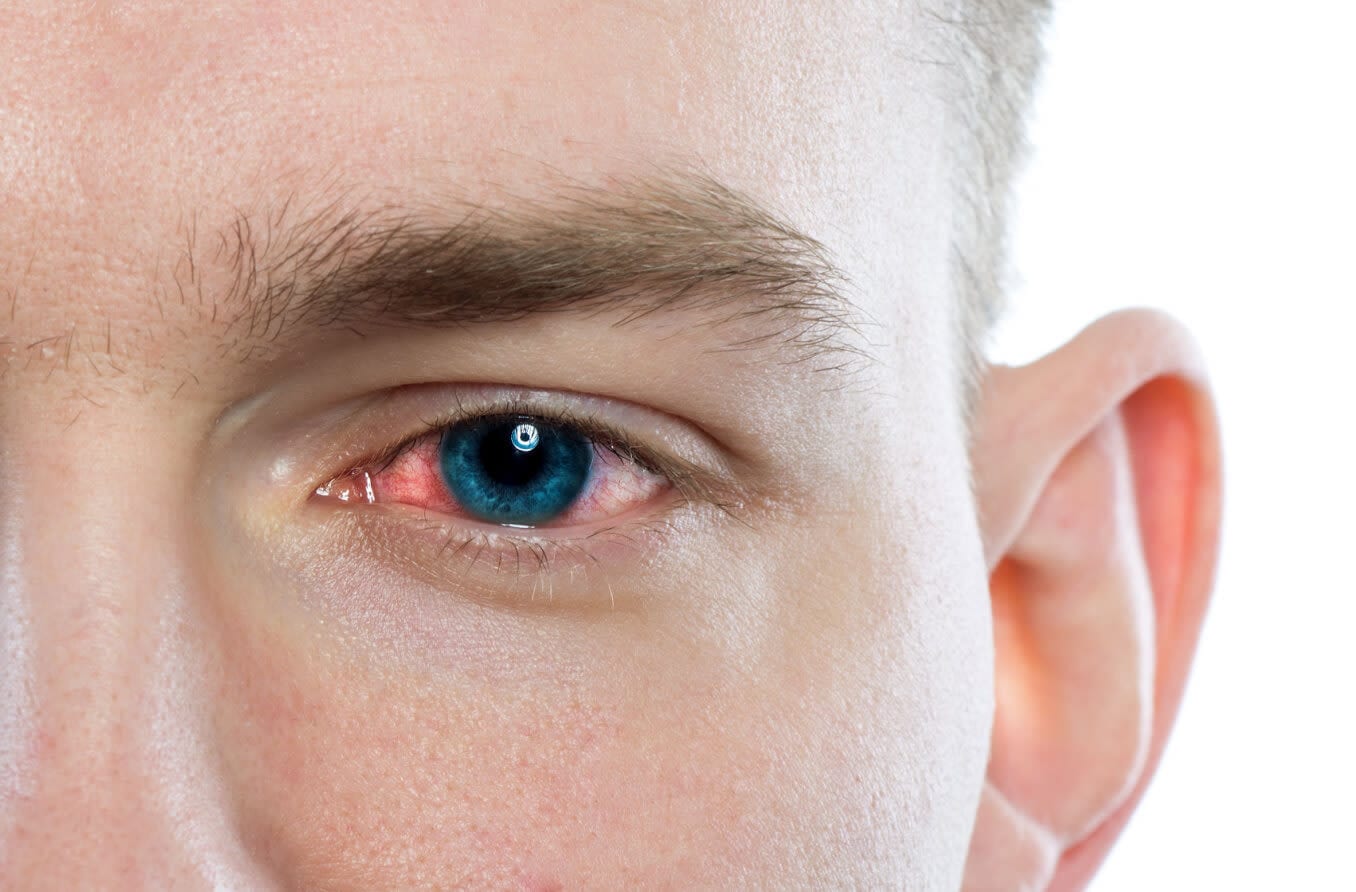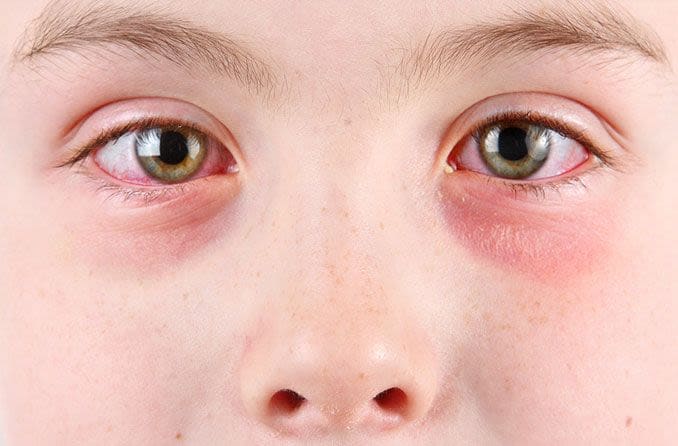Learning you have pink eye is never a pleasant discovery. Whether you realize the gritty feeling in your eye is more than just a fleeting irritation, or you wake up with your eyes crusted shut, the reaction is the same: Now what?
Depending on the type of conjunctivitis you have, your symptoms may be contagious. But how do you know if your conjunctivitis is contagious and, if it is, for how long?
Listed below are details on the types of pink eye that are contagious, how the infection spreads and how long it typically lasts. So, take that cold compress off your peepers, apply some eye drops and let’s get started.
Is pink eye contagious?
Yes, viral and bacterial forms of conjunctivitis are as contagious as the common cold. However, allergic conjunctivitis, which is caused by an allergic reaction, is not contagious.
In the case of viral conjunctivitis (also called pink eye), the condition can be contagious even before symptoms of conjunctivitis appear in an infected person.
According to the U.S. Centers for Disease Control and Prevention (CDC), most viruses that cause conjunctivitis are spread through hand-to-eye contact after touching objects that are contaminated with the infectious virus. So you can “catch” viral pink eye even if no one else in the same environment — such as a school classroom — has symptoms.
Viral pink eye is contagious as long as someone shows signs and symptoms and can remain contagious for weeks after symptoms first appear, according to the American Academy of Pediatrics.
The incubation period of bacterial conjunctivitis — the time from when a person is exposed to conjunctivitis to the time they start showing symptoms — is anywhere from 24 to 72 hours. During this time, they are not contagious. Once symptoms emerge, the individual is considered extremely contagious until symptoms are no longer present.
How long does pink eye last?
Pink eye is no longer contagious when your eyes look and feel normal again. How long it takes for this to happen depends on what caused the pink eye to begin with. Typically, conjunctivitis symptoms last anywhere from a few days to a few weeks.
Like many viral infections, pink eye cannot be treated directly and must run its course. Symptoms are usually at their worst between three and five days after the infection begins.
In cases of viral conjunctivitis, you can use artificial tears and cold compresses to help relieve itching and inflammation until the pink eye clears up. If no complications occur, your eyes should improve within a few days, but symptoms could last up to two weeks. Some natural remedies for pink eye might help relieve your symptoms; however, you should always consult your eye doctor before trying them.
Typically, bacterial conjunctivitis is treated with prescription antibiotic eye drops, but even with treatment, it can last up to a month or longer. Luckily, with this type of conjunctivitis, people are no longer contagious after 24 hours of beginning antibiotic treatment.
When dealing with allergic conjunctivitis, reactions to allergens such as dust, pollen and pet dander can last indefinitely, depending on the time of year and your exposure to the source of the reaction. As long as you’re exposed to triggering allergens, your allergic conjunctivitis will likely stick around.
Until you’re able to remove the source of your allergic conjunctivitis, applying eye drops with an antihistamine can calm your eye allergies. Allergy eye drops can be purchased over the counter or with a prescription from your eye doctor.
If your conjunctivitis symptoms last longer than four weeks and include hot, swollen eyelids, you should see your eye doctor, as it’s possible that you have chronic conjunctivitis.
SEE RELATED: Pink eye stages
How does pink eye spread?
Two contagious types of conjunctivitis — bacterial and viral — are spread in multiple and very similar ways. The simplest way to explain the cause of conjunctivitis is through contact with already infected things.
For bacterial conjunctivitis, these “things” can be characterized as another person with conjunctivitis or a contaminated object that you touch with your hands and then touch your eyes and/or face. It’s also possible to expose yourself to conjunctivitis by having the contaminated object in or near your eyes (contact lenses, eyeglasses, etc.).
Respiratory droplets are another culprit for spreading conjunctivitis because of the bacteria or viruses they may contain. Your eyes have a microbiome, or stable environment, where they utilize their own bacteria to keep things balanced. When a different type of bacteria enters the eye, it can throw off the balance and cause the eye to react with symptoms of conjunctivitis.
Similar to bacterial conjunctivitis, viral conjunctivitis (pink eye) is passed through respiratory droplets and infected objects — mainly your fingers or hands — being in or near your eyes. Typically, viral conjunctivitis is caused by contaminants commonly found on hands, including eye and respiratory discharge, infectious tears and fecal matter.
The best way to avoid the spread of pink eye is to wash your hands thoroughly and frequently with soap and water. Practicing proper hygiene is critical for the health of your eyes and your overall well-being.

